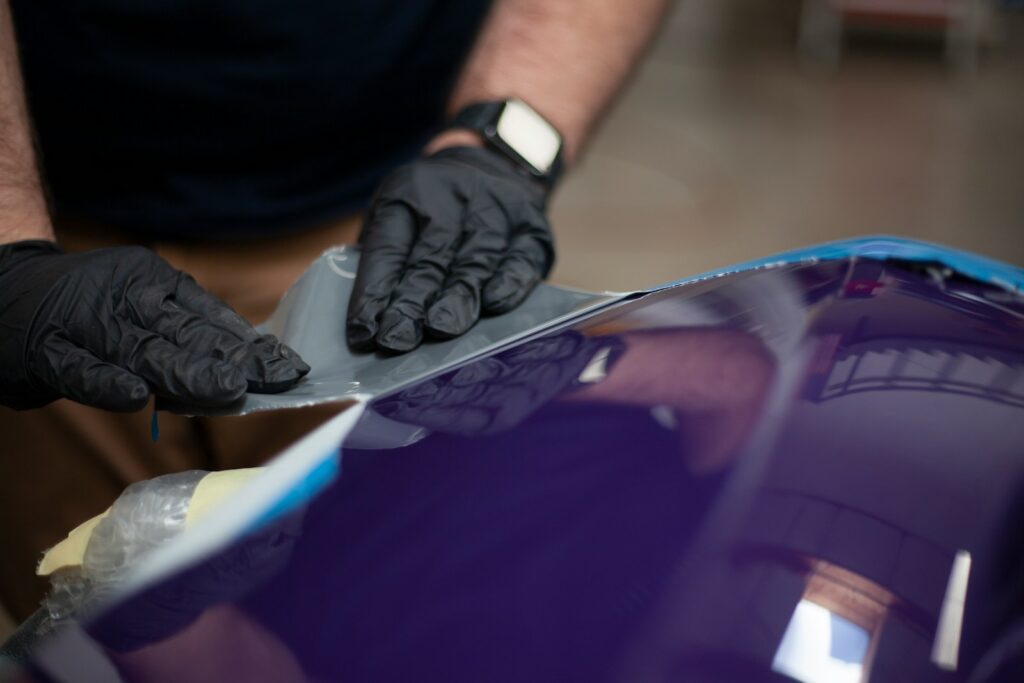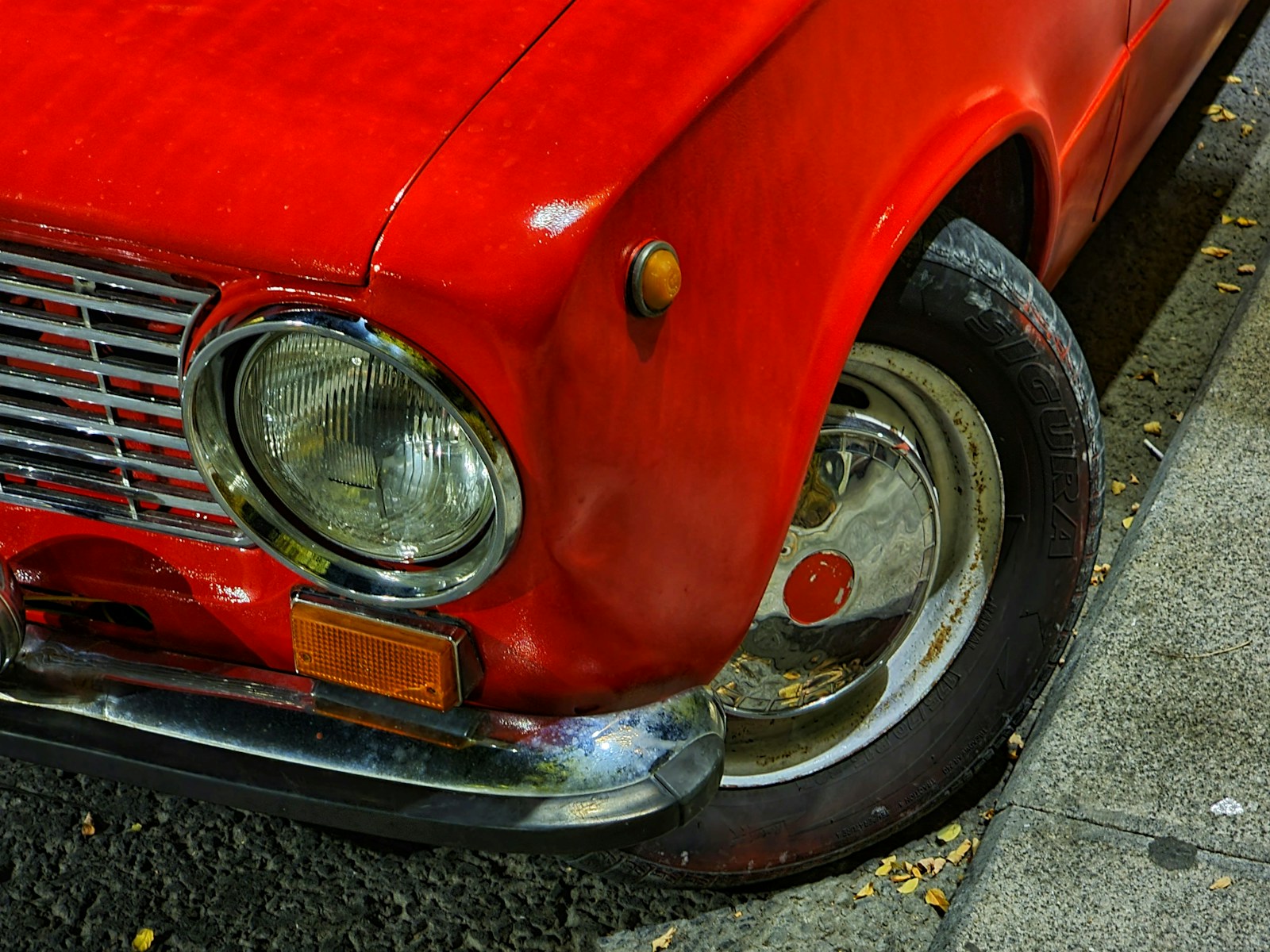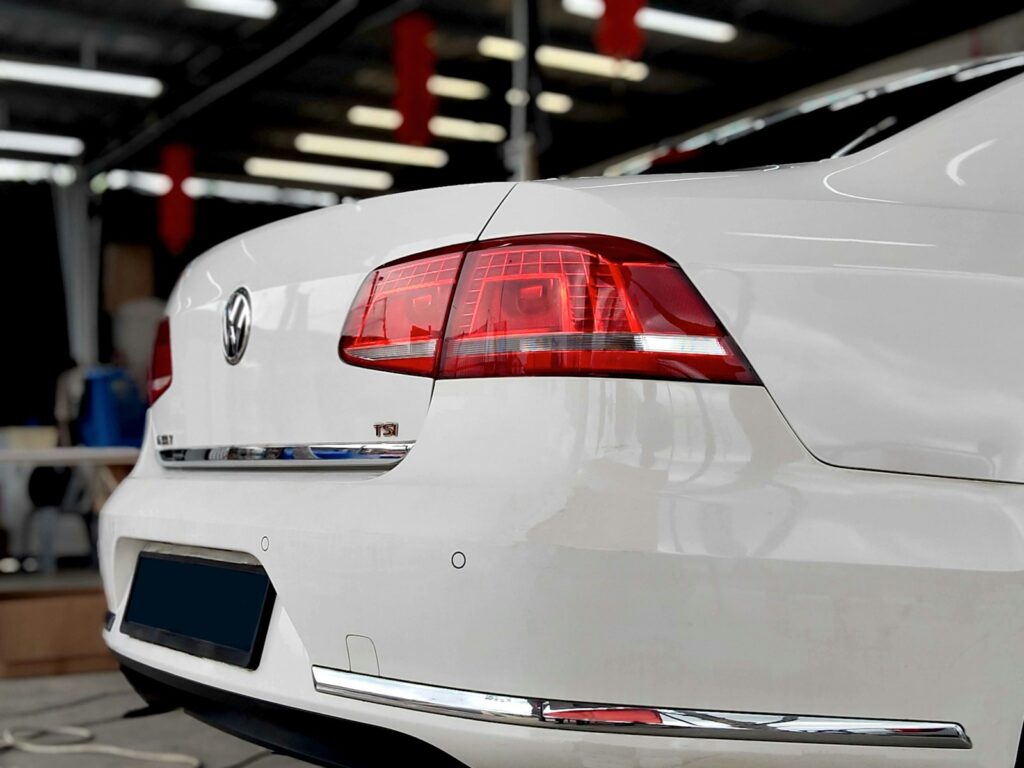Your car’s paint faces relentless attacks every day. UV rays beat down mercilessly during summer months, while road salt and acid rain work to corrode your vehicle’s finish during harsh winters. The question isn’t whether you need paint protection—it’s which type will serve your car best.
Car sealant and car wax represent two distinct approaches to protecting your vehicle’s exterior. While both products aim to shield your paintwork from environmental damage and enhance shine, they differ significantly in composition, durability, and application methods. Understanding these differences can save you time, money, and frustration while ensuring your car maintains its showroom appearance for years to come.
This comprehensive guide breaks down everything you need to know about paint sealants and car wax. You’ll learn how each product works, when to use them, and which option delivers the best results for your specific needs and budget.
What Is Car Sealant?
Car paint sealant is a synthetic polymer-based product designed to create a protective barrier on your vehicle’s surface. Unlike traditional wax products, sealants rely on advanced chemical formulations that bond directly with your car’s paint at a molecular level.
High quality paint sealants contain synthetic polymers, resins, and sometimes ceramic particles that cure and harden after application. This creates a durable, glass-like ceramic coating that repels water, dirt, and contaminants more effectively than natural alternatives. The synthetic nature of these products allows manufacturers to engineer specific properties like enhanced durability, superior water beading, and resistance to extreme temperatures.
Paint sealant typically comes in liquid form, making it easier to apply evenly across large surfaces. The curing process can take several hours to complete, during which the polymers cross-link to form a robust protective layer. This chemical bonding explains why sealants often last significantly longer than traditional wax products.

Photo by Clarity Coat on Unsplash
Benefits of Paint Sealant
Extended Durability: Most high quality sealants provide protection for 6-12 months under normal driving conditions, with some premium formulations lasting even longer.
Superior Water Beading: The synthetic polymers create excellent hydrophobic properties, causing water to form tight beads that roll off easily during rain or washing.
Chemical Resistance: Sealants offer better protection against acid rain, road salt, and environmental pollutants compared to natural wax products.
UV Protection: Advanced formulations include UV inhibitors that prevent paint oxidation and fading caused by prolonged sun exposure.
Easy Maintenance: The slick surface created by sealants makes dirt and grime easier to remove during regular washing.
Consistent Results: Synthetic formulations deliver predictable performance regardless of application conditions or ambient temperature.
Drawbacks of Paint Sealant
Higher Cost: Quality paint sealants typically cost more upfront than traditional wax products.
Longer Curing Time: Some sealants require 12-24 hours of cure time before exposure to moisture, limiting when you can apply them.
Less Natural Appearance: While sealants provide excellent reflective shine, some enthusiasts prefer the warm glow that only natural carnauba wax can deliver.
Application Sensitivity: Proper surface preparation becomes more critical with sealants, as any contamination can affect bonding.
What Is Car Wax?
Car wax represents the traditional approach to paint protection, with formulations based on natural carnauba wax, synthetic polymers, or hybrid blends. Carnauba wax, harvested from Brazilian palm leaves, has been the gold standard for automotive protection for over a century due to its exceptional shine and water-repelling properties.
Pure carnauba wax products contain varying percentages of this natural ingredient, typically blended with petroleum distillates, oils, and other additives to improve application characteristics. The natural composition gives carnauba wax its distinctive warm glow and deep, wet-look shine that many car enthusiasts consider unmatched by synthetic alternatives.
Car wax works by filling microscopic imperfections in your paint surface while creating a sacrificial barrier that absorbs damage from environmental contaminants. As this protective layer wears away over time, it takes stains, light scratches, and oxidation with it, preserving the original paint underneath.
Benefits of Car Wax
Unmatched Shine Quality: Pure carnauba wax delivers a deep, warm glow with incredible depth that synthetic products struggle to replicate.
Natural Ingredients: Many car owners prefer the peace of mind that comes with using natural, renewable materials on their vehicles.
Easy Application: Most wax products apply and remove easily, making them accessible to beginners and experienced detailers alike.
Immediate Results: Unlike sealants that require curing time, wax provides instant protection and shine after buffing.
Cost-Effective: Quality car wax products typically cost less than premium sealants, making them budget-friendly for regular maintenance.
Forgiving Application: Wax products are generally more forgiving if application conditions aren’t perfect.
Drawbacks of Car Wax
Shorter Lifespan: Most car wax products provide 2-4 months of protection under normal conditions, requiring more frequent reapplication.
Temperature Sensitivity: Hot sun can make wax application difficult, and extreme heat may cause some formulations to streak or become difficult to remove.
Limited Chemical Resistance: Natural wax offers less protection against harsh chemicals, road salt, and acid rain compared to synthetic sealants.
Weather Dependent Application: Dry conditions are essential for proper wax application, limiting when you can use these products.

Photo by Hammam Fuad on Unsplash
Key Differences Between Sealant and Wax
Composition and Chemistry
The fundamental difference lies in their chemical makeup. Paint sealants use synthetic polymers engineered for specific performance characteristics, while car wax relies on natural carnauba or synthetic alternatives that mimic natural properties. This distinction affects every aspect of their performance, from durability to appearance.
Synthetic polymers in sealants create stronger molecular bonds with paint surfaces, explaining their superior longevity. Carnauba wax, conversely, forms a more temporary protective film that sacrifices itself to protect the underlying paint.
Durability and Longevity
Paint sealants consistently outlast car wax products by significant margins. While quality wax might provide 2-4 months of protection, high quality sealants routinely deliver 6-12 months of performance. This extended protection translates to fewer applications per year and potentially lower long-term maintenance costs.
Environmental factors affect both products, but sealants generally maintain their protective properties longer under harsh conditions. Road salt, which can quickly degrade natural wax, has less impact on synthetic polymer coatings.
Appearance and Finish
The visual difference between sealant and wax remains a primary consideration for many car owners. Carnauba wax produces a warm, deep glow with incredible depth that appears almost liquid. This natural warmth creates what many consider the most beautiful automotive finish possible.
Paint sealants deliver excellent shine and clarity but with a cooler, more clinical appearance. Modern sealants have narrowed this gap considerably, but discerning eyes can still distinguish between the two finishes.
Application Process
Car wax typically offers a more straightforward application process. Apply thin layers in circular or straight motions, allow to haze, then buff to a flawless finish. The process is immediate—no waiting for curing or worrying about moisture exposure.
Paint sealants require more attention to detail. Surface preparation becomes critical, and many products need specific temperature and humidity conditions for optimal bonding. The curing process means your car must remain dry for extended periods after application.
Cost Analysis
Initial costs favor car wax, with quality products available at reasonable prices. However, the frequency of reapplication can make wax more expensive over time. Sealants cost more upfront but provide better value through extended protection periods.
Consider the time investment as well. More frequent wax applications require additional labor and materials, while sealants allow longer intervals between maintenance sessions.
When to Choose Car Paint Sealant
Paint sealant excels in specific situations where maximum protection and durability matter most. Consider sealant when:
Daily Driving Conditions: If your vehicle faces harsh environmental conditions regularly—highway driving with road salt exposure, parking outdoors in direct sunlight, or urban environments with high pollution—sealant provides superior long-term protection.
Time Constraints: Busy schedules benefit from sealant’s extended protection periods. Instead of waxing every few months, you can maintain excellent protection with twice-yearly applications.
Winter Protection: Road salt and ice-melting chemicals attack automotive finishes aggressively. Sealant’s chemical resistance makes it the better choice for winter driving conditions.
New Vehicle Protection: Fresh paint benefits from sealant’s strong bonding characteristics and extended durability, helping maintain that new-car appearance longer.
Budget Considerations: While sealants cost more initially, their extended protection can provide better long-term value for budget-conscious owners.
Car Sealant Products and Brands
Choosing the right car sealant can make a significant difference in protecting your vehicle’s paint from the elements. Here are seven top-rated car sealant products and brands to consider:
Chemical Guys JetSeal
Known for its advanced UV protection and long-lasting shine, Chemical Guys JetSeal is a favorite among car enthusiasts and professionals alike.
Meguiar’s M21 Mirror Glaze Synthetic Sealant 2.0
Meguiar’s offers a premium synthetic sealant with deep gloss and durable protection, ideal for all types of paint finishes.
Turtle Wax Hybrid Solutions Pro Flex Wax
Combining advanced hydrophobic technology and durability, this sealant is easy to apply and delivers excellent water-beading performance.
Griot’s Garage Best of Show Paint Sealant
Griot’s Garage ensures long-term paint protection and a high-gloss finish, perfect for keeping your car showroom-ready.
Collinite No. 845 Insulator Wax
Though it acts as both a wax and sealant, this versatile product provides incredible longevity and protection against environmental contaminants.
CarPro Reload Spray Sealant
Designed for quick and easy application, CarPro Reload adds a slick hydrophobic layer, enhancing gloss and resisting dirt and water spots.
Adam’s UV Ceramic Paint Coating
With ceramic-infused technology, Adam’s Polishes delivers superior durability, UV resistance, and a striking glossy finish.
Each of these products is widely recognized for its effectiveness in preserving and protecting automotive finishes, making them excellent options for any car owner. To explore more car detailing products, visit the respective product websites.
When to Choose Car Wax
Carnauba wax remains the preferred choice for specific applications where its unique properties shine:
Show Cars and Concours Events: Nothing matches carnauba wax’s deep, warm glow for automotive competitions and shows where appearance is paramount.
Garage-Kept Vehicles: Cars stored indoors don’t face the same environmental stresses, allowing you to enjoy wax’s superior aesthetics without sacrificing protection.
Weekend Warriors: Classic cars and weekend drivers benefit from wax’s immediate results and stunning appearance for special occasions.
Climate-Controlled Storage: Vehicles stored in controlled environments can maximize wax’s aesthetic benefits while minimizing its durability limitations.
Detailing Enthusiasm: Car enthusiasts who enjoy the ritual of regular waxing often prefer the immediate satisfaction and beautiful results that carnauba provides.
Application Best Practices
Preparing Your Vehicle
Regardless of which product you choose, proper preparation determines final results. Start with a thorough wash using quality car shampoo to remove surface dirt and grime. Clay bar treatment removes embedded contaminants that can interfere with product bonding.
Minor scratches and swirl marks should be addressed before applying protection. Polish or compound as needed to create a smooth, defect-free surface. Clean the vehicle thoroughly with isopropyl alcohol or a dedicated surface prep product to remove any remaining oils or residues.
Environmental Conditions
Apply both sealants and wax in appropriate conditions for best results. Avoid direct sunlight and work in temperatures between 60-80°F when possible. High humidity can affect curing for sealants, while hot surfaces make wax difficult to remove cleanly.
Choose calm days without wind to prevent dust and debris from settling on freshly applied products. Working in shade or during cooler parts of the day prevents products from drying too quickly.
Application Techniques
For Sealants: Apply thin, even coats using microfiber applicators or foam pads. Work in small sections to ensure complete coverage without missing spots. Follow manufacturer instructions for cure times strictly—rushing this process compromises durability.
For Wax: Use circular or straight-line motions with clean applicators. Apply sparingly—thin layers provide better results than thick applications. Allow proper haze time before buffing with clean microfiber towels.
Post-Application Care For Paint Protection
Both products benefit from gentle treatment during the first 24-48 hours. Avoid automatic car washes, harsh chemicals, and abrasive materials that could damage the fresh protection layer.
Combining Sealant and Wax
Advanced detailers sometimes layer products to capture benefits from both categories. This technique, known as “topping,” involves applying sealant as a base layer for durability, then adding a thin coat of carnauba wax for enhanced appearance.
The sealant provides long-term protection and chemical resistance, while the wax delivers superior shine and depth. This combination requires more time and skill but can produce exceptional results for show cars and special vehicles.
Apply sealant first and allow complete curing before adding wax. The wax layer will need refreshing more frequently than the underlying sealant, but this approach maximizes both protection and appearance.
Professional vs DIY Application
DIY Application: Most car owners can successfully apply both sealants and wax with basic tools and techniques. Start with user-friendly products and practice proper surface preparation. Take your time and work in appropriate conditions for best results.
Professional Services: Complex sealant systems, paint correction needs, or valuable vehicles may warrant professional application. Experienced detailers have specialized tools, controlled environments, and expertise to maximize product performance.
Consider professional services for your first sealant application to learn proper techniques, then maintain the protection yourself with future applications.

Save Time and Effort with Love My Car Car Wash
Love My Car Car Wash takes the hassle out of cleaning and protecting your vehicle’s paint. With advanced cleaning techniques and high-quality products, our service ensures that your car receives a thorough wash while safeguarding its finish. By eliminating the need for labor-intensive scrubbing and polishing, we make preserving your vehicle’s shine effortless. Our team handles everything with precision, using professional-grade tools and protective treatments, so you can focus on enjoying a spotless, glossy, and well-maintained car without lifting a finger.
Making Your Decision
Choose paint sealant when protection, durability, and convenience matter most. Daily drivers, harsh climate exposure, and busy schedules all favor sealant’s practical advantages. The extended protection periods and superior chemical resistance make sealants ideal for most car owners seeking maximum paint protection with minimal maintenance.
Select car wax when appearance is your primary concern and you enjoy regular maintenance routines. Show cars, weekend vehicles, and garage-kept classics benefit from wax’s unmatched aesthetic properties. The immediate results and stunning finish quality make carnauba wax irreplaceable for certain applications.
Both products have earned their place in automotive care through decades of proven performance. Your choice depends on weighing protection needs against aesthetic preferences, factoring in your specific driving conditions and maintenance preferences.
Car Care | Protecting Your Investment for Years to Come
Your vehicle represents a significant investment deserving proper protection. Whether you choose the extended durability of paint sealant or the stunning beauty of carnauba wax, regular paint protection prevents costly damage while maintaining your car’s appearance and resale value.
The key to success lies in consistent application using quality products and proper techniques. Don’t wait until your paint shows signs of damage—proactive protection always costs less than restoration. Take time to evaluate your specific needs, driving conditions, and maintenance preferences to make the best choice for your situation.
Ready to give your car the protection it deserves? Consider visiting a professional car wash and detail center to discuss your options and see both products demonstrated on actual vehicles. Experienced professionals can provide personalized recommendations based on your car’s condition and your specific requirements.







